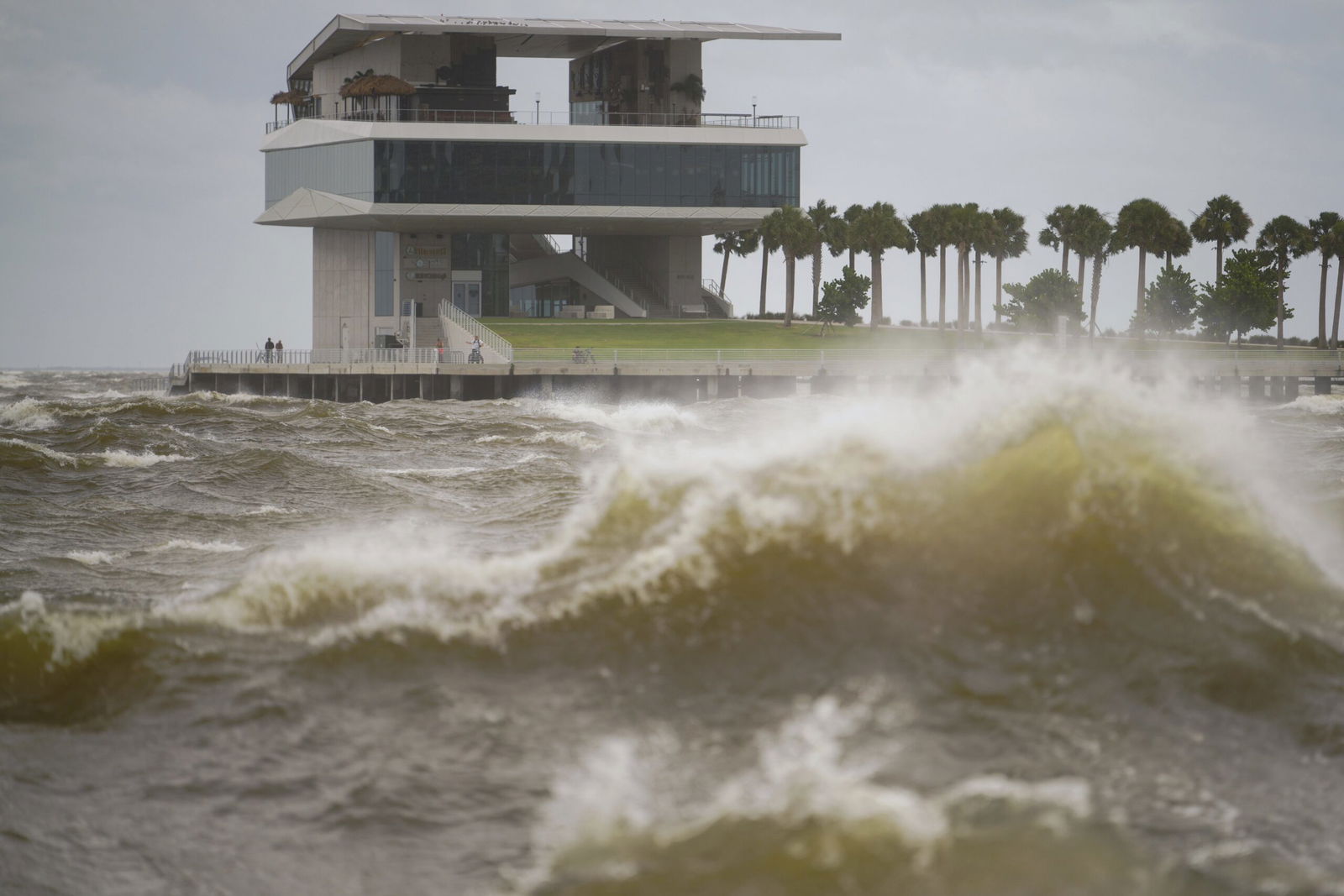What to know about powerful Hurricane Erin as it moves away from the US East Coast

By SAFIYAH RIDDLE
Associated Press/Report For America
Hurricane Erin pounded the North Carolina coast with strong waves and gusty winds as it slowly moved out to sea Thursday. It was still considered dangerous for beachgoers along the U.S. East Coast.
Erin lost some strength Tuesday and dropped to a Category 2 hurricane as it moved northward, roughly parallel to the East Coast. However, its maximum sustained winds were around 100 mph (160 kph) on Thursday. Erin could become a major hurricane again before finally weakening by Friday, the National Hurricane Center in Miami said.
The hurricane was about 260 miles (420 kilometers) east of Cape Hatteras, North Carolina, late Thursday morning and was moving north-northeast at 18 mph (29 kph).
Although the weather center was confident Erin would not make direct landfall in the United States, authorities warned that water conditions along the East Coast remain dangerous.
Officials on a few islands along North Carolina’s Outer Banks issued evacuation orders. The orders come at the height of tourist season on the thin stretch of low-lying barrier islands that juts far into the Atlantic Ocean. By Wednesday evening, officials had closed Highway 12 on Hatteras Island as the surge increased and waves rose. Ocracoke Island’s connection to its ferry terminal was cut off.
In the Caribbean, heavy rainfall earlier struck parts of the southeast Bahamas and the Turks and Caicos Islands, the weather center said.
Here is what to know about Hurricane Erin:
The dangers in the Outer Banks
Erin poses the biggest threat to the barrier islands of North Carolina’s Outer Banks. Gov. Josh Stein declared a state of emergency Tuesday in advance of the storm.
The storm brought dangerous waves and rip currents to the state. There was a sustained wind of 45 mph (72 kph) and a gust to 54 mph (87 kph) measured at Jennette’s Pier in Nags Head, North Carolina, the weather center said.
The state had mobilized 200 National Guard troops along the coast, as well as three swift water rescue teams as part of its preparations.
At least 75 people were rescued from rip currents through Tuesday in Wrightsville Beach, near Wilmington, North Carolina, officials said.
Two houses are sitting precariously amid the high waves in Rodanthe, where at least 11 other houses have toppled into the surf over the past five years. Ocean waves take away sand that is packed around the wooden pilings that keep the homes above water.
Troubled waters force rescues
Warnings about rip currents have been posted from Bermuda and Florida all the way up to the New England coast.
Nantucket is the closest spot in New England to Erin’s anticipated path and was likely to see the strongest winds, gusting about 25 to 35 mph (40 to 55 kph) at peak with waves potentially reaching a height of 10-13 feet (3-4 meters).
Citing treacherous waters, officials prohibited swimming at all beaches in New York City as well as some in Long Island and New Jersey through Thursday.
Bermuda won’t feel the full intensity of the storm until Thursday evening, and the island’s services will remain open in the meantime, acting Minister of National Security Jache Adams said. Storm surge could reach up to 24 feet (7.3 meters) by Thursday, Adams said.
Already this year, there have been at least 27 people killed from rip currents in U.S. waters, according to the National Weather Service. About 100 people drown from rip currents along U.S. beaches each year, according to the United States Lifesaving Association. And more than 80% of beach rescues annually involve rip currents.
Deceptively devastating impacts
Storm surge is the level at which seawater rises above its normal level.
Much like the way a storm’s sustained winds do not include the potential for even stronger gusts, storm surge doesn’t include the wave height above the mean water level.
Surge is also the amount above what the normal tide is at a time, so a 15-foot storm surge at high tide can be far more devastating than the same surge at low tide.
A year ago, Hurricane Ernesto stayed hundreds of miles (kilometers) offshore from the Eastern Seaboard yet still produced high surf and swells that caused coastal damage.
Fluctuating strength
Erin’s strength has fluctuated significantly over the past week.
The most common way to measure a hurricane’s strength is the Saffir-Simpson Scale that assigns a category from 1 to 5 based on a storm’s sustained wind speed at its center, with 5 being the strongest.
Erin reached a dangerous Category 5 status late last week with 160 mph (260 kph) sustained winds before weakening.
Lethal summer of floods
Although Erin is the first Atlantic hurricane of the year, there have been four tropical storms this hurricane season already. Tropical Storm Chantal made the first U.S. landfall of the season in early July, and its remnants caused flooding in North Carolina that killed an 83-year-old woman when her car was swept off a rural road.
And, at least 132 people were killed in floodwaters that overwhelmed Texas Hill Country on the Fourth of July.
Just over a week later, flash floods inundated New York City and parts of New Jersey, claiming two lives.
___
Riddle is a corps member for The Associated Press/Report for America Statehouse News Initiative. Report for America is a nonprofit national service program that places journalists in local newsrooms to report on undercovered issues.


